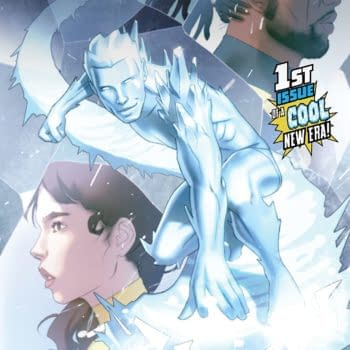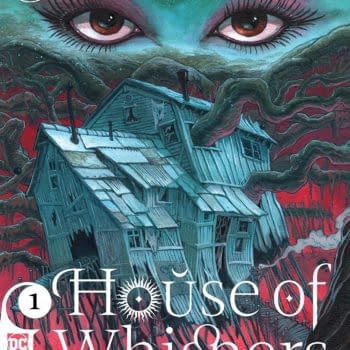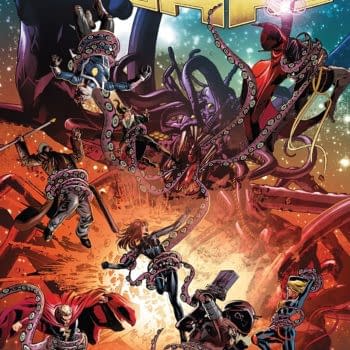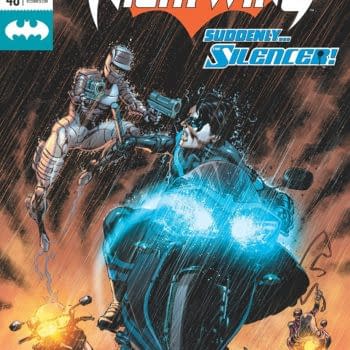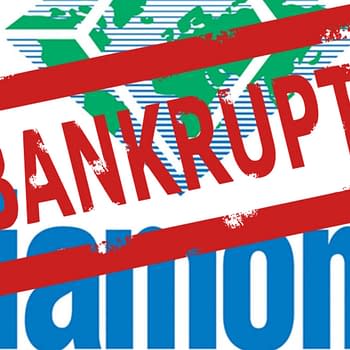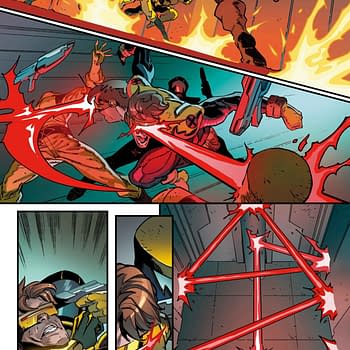Posted in: Avengers, Comics, Marvel Comics, Review | Tagged: adam warlock, Al Milgrom, anthony russo, avengers, Avengers: Infinity War, ian laughlin, infinity war, jim starlin, joe and anthony russo, joe russo, kevin feige, ron lim, thanos, The Russo Brothers
Countdown to Avengers: Infinity War – The Infinity War Comic Crossover
As we race towards Avengers: Infinity War, we now look back at the story that shares its name, Marvel's Infinity War.
I had looked up some details of this story on the Marvel Wiki some time ago, but I had forgotten the specifics. Having reread it, I can say with all certainty that Avengers: Infinity War will have very little in common with the plot of the comic crossover.
Marvel's Infinity War took place in the aftermath of Infinity Gauntlet, with writer Jim Starlin and artist Ron Lim returning for this excursion. That said, significant events took place between Gauntlet and War.
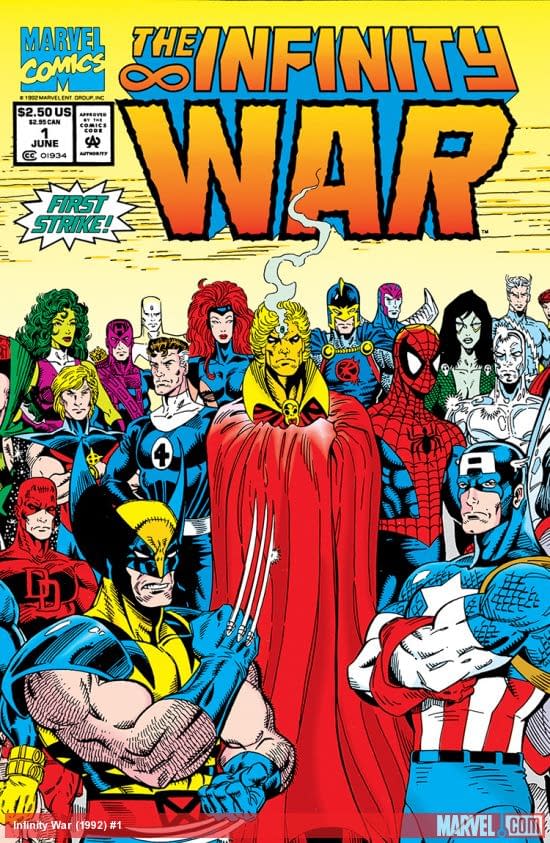
Namely, Adam Warlock had been split into three beings. His good and evil sides were expelled when he took charge of the Infinity Gauntlet and formed the Infinity Watch. This was supposed to be due to his divinity and should have allowed him to better perform the role.
However, Adam Magus, the manifestation of the evil dwelling within Adam Warlock, had already escaped and caused havoc once. The reality in which he was born was destroyed, erasing him. Don't ask about the alternate reality; it's not that important to the plot and the specifics were hazy in War.
In any case, Magus is the main villain of Infinity War. He has returned, gained near-omnipotent power and established a fortress outside our reality. He has done so by collecting a few Cosmic Cube-like artifacts, but he uses them through a machine as opposed to wielding them himself. He's also conjured a thrall in the shape of Thanos and can summon doppelgängers of Earth's heroes on a whim.
The powerful machinations of Magus are first discovered by Galactus, Mister Fantastic, Thanos, and Doctor Doom. Each player responds by gathering allies. Galactus and his then-herald Nova (not that one or that one) summon Silver Surfer and Doctor Strange. Mister Fantastic puts out a distress call to the Avengers, the West Coast Avengers, the X-Men, X-Factor, Spider-Man, Daredevil, the New Warriors, and Alpha Flight. Thanos links up with Adam Warlock, Gamora, Drax the Destroyer, Pip the Troll, and Moondragon—all together they make up the Infinity Watch. Doctor Doom, knowing he will need greater technology than he currently possesses, enters a partnership with Kang the Conqueror.
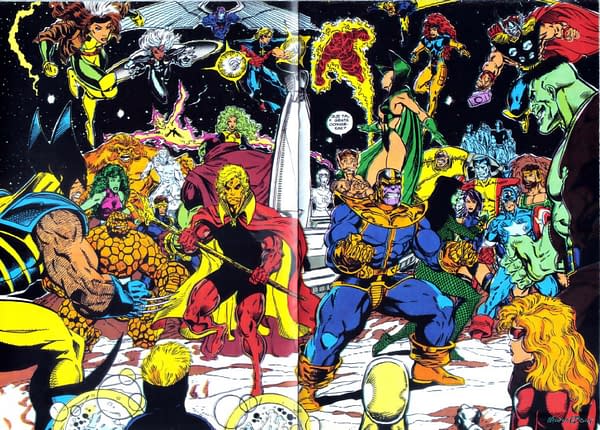
Galactus and Thanos's cadre soon reach a waypoint outside our dimension but not in Magus's. Doom and Kang follow Galactus there. The army of heroes gathered by the Fantastic Four is troubled by the realization that both Richards and Iron Man had been replaced by Magus's doppelgängers. After that's sorted, Captain America leads an expedition force of the most powerful heroes present to the aforementioned waypoint. Cap's group and Thanos plus Infinity Watch have a scuffle. Galactus halts it all. All the while, we are led to believe that absolutely every part of this had been planned and calculated by the Magus — except for Doom and Kang's involvement.
Circumstances lead to Adam Warlock reforging the Infinity Gauntlet, but it has been depowered by Eternity and the Living Tribunal. Galactus and Gamora go to the Living Tribunal outside Eternity to propose the Gauntlet's reactivation. The Magus planned for this too and takes Warlock and the Gauntlet back to his base. Eternity and the Tribunal elect to repower the Gauntlet, Magus has infinite power. Things go sideways for every player involved except Magus.
However, the Gauntlet is incomplete. Thanos has a possession of the Reality Gem, this allows Warlock and Magus to enter a battle of wills over the Gauntlet. Warlock wins, and he sets everything right. Magus is held inside Adam's Soul Gem, Adam himself is left in a coma, Thanos returns to his farm, Eternity depowers the Gauntlet, and we are left to wonder about an unseen other player (who turns out to be the Goddess, Warlock's good side).
To go ahead and sling the cards across the table, Infinity War is not as good as Infinity Gauntlet. I don't think that's a controversial opinion; there is a reason Gauntlet is more often remembered.
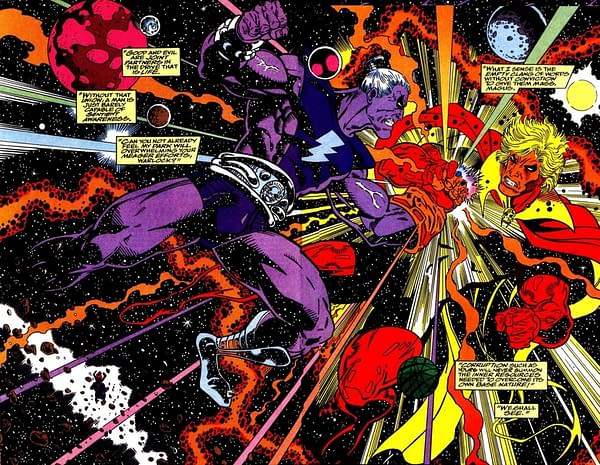
That's not to say that War isn't an enjoyable story in its own right. It still has a lot of Starlin's big and crazy ideas. Warlock and Thanos make for great leads, Galactus is well represented in this tale, and, once the dominos start to fall, the story turns into quite a cosmic romp. There are some creative things done with the sequencing — the scene where Gamora is sent into Eternity itself comes to mind — Ron Lim puts together some cool fight scenes, and there is a conversation between Thanos and Magus towards the beginning that is almost poetry in how well it's constructed.
That said, there are a lot of reasons War falls short of Gauntlet. Magus himself is a big problem; he's not anywhere near as compelling a villain as the Mad Titan. It's laughable to believe that Magus had every part of this planned out, especially when Galactus goes to plead his case with the Tribunal and the point of all this falls on you like a sack of convoluted bricks.
Adam Warlock being Jim Starlin's pet character stands out even more so in this story than in Gauntlet. Infinity War falls into a similar trap as Dark Nights: Metal where every action taken by the heroes is immediately undercut by a scene of the villain grinning and talking about how everything is going to plan. The difference here is that Warlock is the magic key to everything and is able to outwit Magus's impossibly complex scheme. He and Thanos are propped up above the pointless efforts of Earth's heroes, who were far more integral to the plot of Gauntlet. Here, Magus even admits to bringing in the Avengers, FF, X-Men, etc. to complicate matters. In the end, Warlock, Thanos, and Galactus are the only necessary players on the side of the angels.
You may notice I omitted the "wild cards" Doom and Kang from that statement. That's because they really don't do anything except stall Magus for a few seconds, ultimately doing nothing to damage his plan. Plus, they come off almost comedically ignorant; each scene with them is punctuated with one looking forward to betraying the other. They come off like the Wet Bandits from Home Alone.
I'm inclined to believe there was some greater plan here with Warlock's duality and the existence and necessity of Magus and, later, the Goddess. Admittedly, I don't have the full scope having not read Infinity Crusade and the Goddess's arc therein. I'm not sure how well this comes together in the end. Magus doesn't make an interesting statement on Warlock; he's just a bog-standard raving madman antagonist.
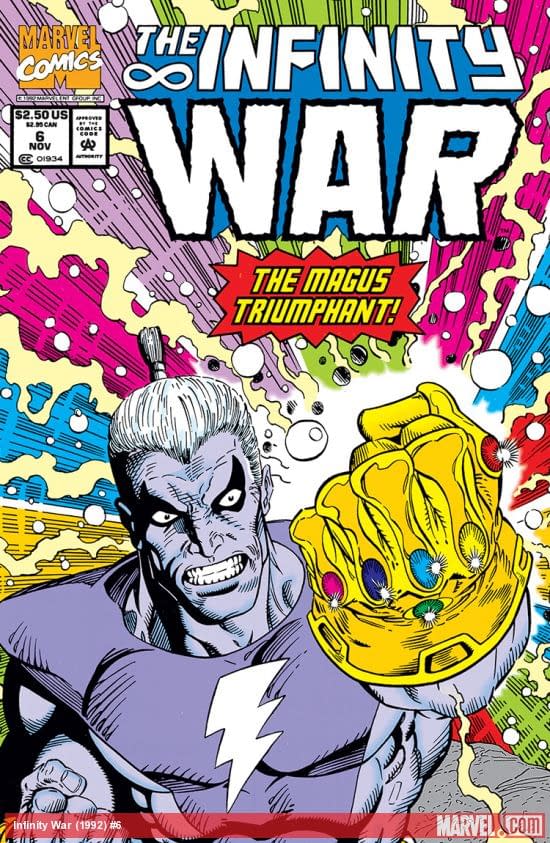
Also, he has a topknot, and it looks terrible. It's only marginally better than his previous hair, which was a poofie-haired Art Garfunkel look.
As I said, Ron Lim does some good work with the vast cosmic scenes and the climactic battles. However, his figures tend towards a very '90s aesthetic, with most characters having ludicrously narrow hips and wide chests. This culminates with the outright silly appearance of Drax the Destroyer and Strong Guy. Beyond that admittedly significant problem, the book looks good. Al Milgrom and Ian Laughlin provide the inking and color respectively. The former looks tight and holds the forms together well, and the latter brings the life and cosmic energy the story needs, even if they could have gone even wilder with the palette.
Infinity War is a troubled but solid follow-up to Infinity Gauntlet. While this story will likely contribute nothing beyond its name to the upcoming Avengers film, it has some unique ideas, a large scope, and vast ambition. Starlin crafted a memorable story, and Lim, Milgrom, and Laughlin provide some good artwork. I recommend checking this one out if you want more of Thanos, Adam Warlock, and the Infinity Gauntlet as we near Avengers: Infinity War.


